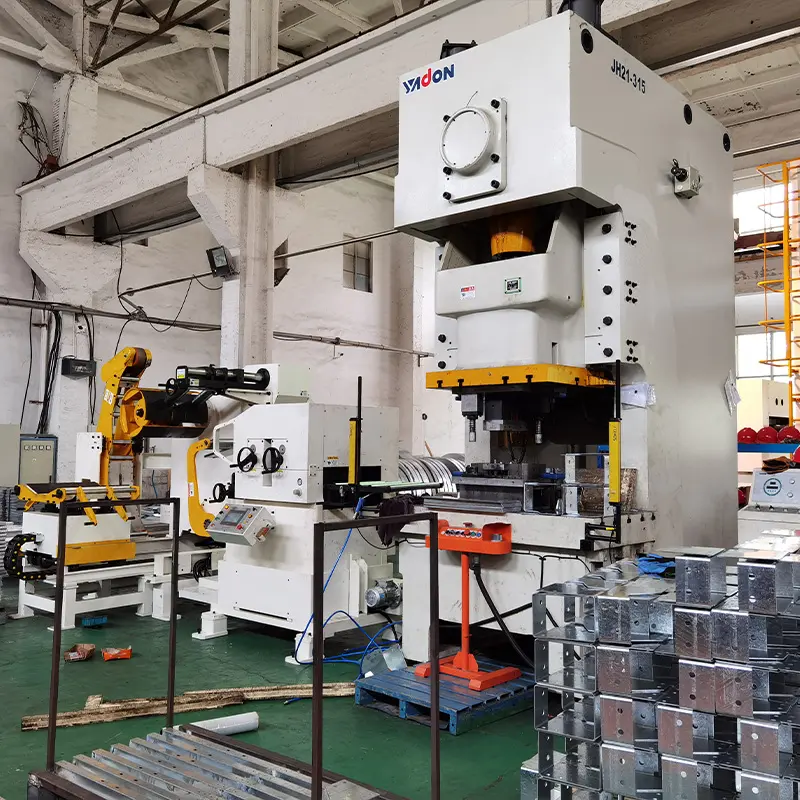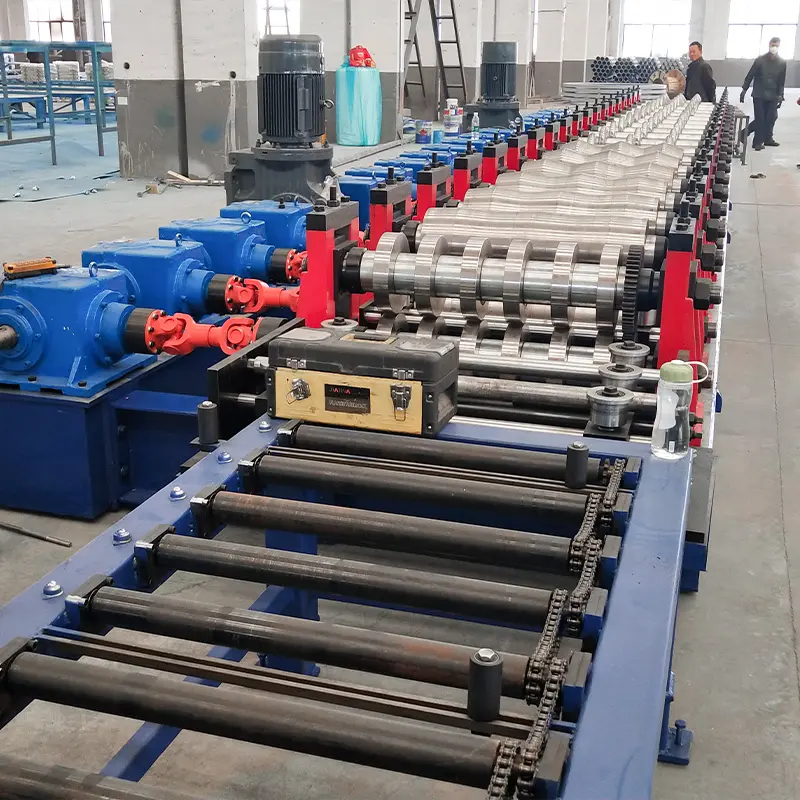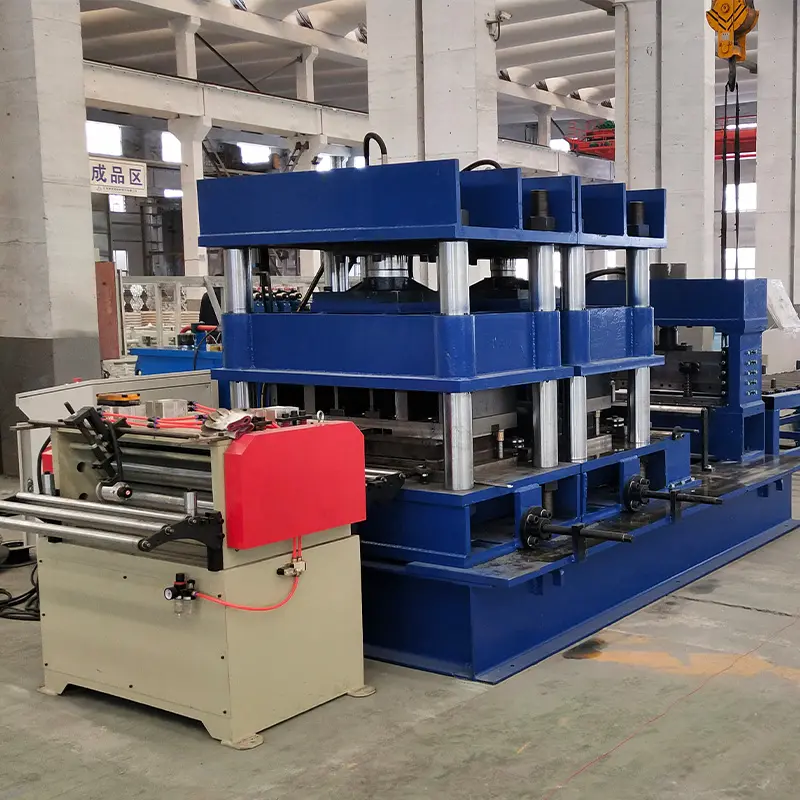परिचय
In the realm of modern construction and manufacturing, precision and efficiency are paramount. The utilization of advanced machinery has revolutionized the way we fabricate structural components, and one such remarkable innovation is the Angle Steel Roll Forming Machine. This article delves into the intricacies of this machine, its significance, the roll forming process, applications, and more.
Understanding Angle Steel Roll Forming
Angle steel is a vital element in various industries, serving as a fundamental material for constructing frames, supports, and other structural frameworks. Angle Steel Roll Forming Machines are engineered to transform coiled metal sheets into angle steel profiles with a consistent cross-section. Unlike traditional methods that involve cutting and welding individual pieces, roll forming offers a continuous and cost-effective process.

Importance of Angle Steel Roll Forming Machines
The efficiency of manufacturing angle steel using roll forming machines cannot be overstated. It allows for high-volume production without sacrificing accuracy. This method minimizes material waste, as it shapes the metal with precision, reducing the need for excessive trimming or adjustments. Moreover, the resulting angle steel exhibits uniformity in dimensions and mechanical properties.
Key Components of Angle Steel Roll Forming Machines
Angle steel roll formers consist of several essential components working in harmony. These include:
- Uncoiler: This component holds the coil of metal that will be fed into the machine.
- Feeding Mechanism: It ensures the smooth and controlled entry of metal into the roll forming stations.
- Roll Forming Stations: These are sets of rollers that gradually shape the metal into the desired angle profile.
- Cut-off System: This system is responsible for cutting the formed angle steel to the required lengths.
- नियंत्रण प्रणाली: Modern machines incorporate advanced controls for adjusting settings and monitoring the process.
The Roll Forming Process Explained
The roll forming process involves a series of carefully orchestrated steps:
- Material Feeding: The metal coil is fed into the machine’s uncoiler.
- Roll Forming Stations: The metal passes through successive roll forming stations, where each set of rollers contributes to shaping the final angle profile.
- Gradual Forming: The metal is incrementally bent and formed as it progresses through the stations.
- Cutting: Once the desired length is achieved, the cut-off system precisely severs the formed angle steel.
- Collection: The finished angle steel pieces are collected and prepared for further processing or distribution.
Advantages of Using Angle Steel Roll Forming Machines
The adoption of angle steel roll forming machines offers several advantages:
- High Efficiency: Continuous production minimizes downtime between shaping individual pieces.
- Cost-effective: Reduced material wastage and minimal need for manual adjustments lead to cost savings.
- Consistency: Each piece of angle steel has uniform dimensions and quality.
- Design Flexibility: Roll forming allows for various hole punching and embossing options.
- Time-saving: The integrated process significantly accelerates production compared to traditional methods.
Applications of Angle Steel Products
Angle steel finds extensive use across industries:
- Construction: Supporting frameworks, bracings, and lintels in buildings.
- Infrastructure: Manufacturing of transmission towers, highway signage, and traffic signal supports.
- Machinery: Structural components in heavy machinery and equipment.
- Automotive: Roll cages and chassis reinforcements.
- Furniture: Crafting durable and robust furniture pieces.

Factors to Consider When Choosing an Angle Steel Roll Forming Machine
Selecting the right roll forming machine involves considering factors like:
- Material Compatibility: Ensure the machine is suitable for the type and thickness of metal you intend to use.
- Production Capacity: Choose a machine that aligns with your required output.
- अनुकूलन: Look for machines that allow for adjustments and design flexibility.
- Automation and Controls: Modern controls enhance efficiency and ease of operation.
- Maintenance and Support: Opt for machines from manufacturers offering reliable support and maintenance services.
Maintenance and Care of Angle Steel Roll Forming Machines
Proper maintenance prolongs the lifespan and ensures optimal performance of roll forming machines:
- Regular Inspection: Check for wear and tear, loose parts, and lubrication needs.
- Cleaning: Keep the machine and its components clean from debris and dust.
- Lubrication: Apply lubricants as recommended to maintain smooth operation.
- Scheduled Maintenance: Adhere to manufacturer-recommended maintenance schedules.
- Operator Training: Train operators in proper usage, safety protocols, and basic troubleshooting.
Future Trends in Angle Steel Roll Forming Technology
The angle steel roll forming industry is poised for advancements:
- Automation: Increasing integration of automation for higher efficiency and reduced human intervention.
- Advanced Controls: Implementation of AI-driven controls for precise adjustments and real-time monitoring.
- Material Innovation: Exploring new metal alloys for enhanced strength and reduced weight.
- Energy Efficiency: Developing machines that consume less energy during operation.
- अनुकूलन: Providing even more design options to meet diverse industry needs.

निष्कर्ष
Angle Steel Roll Forming Machines epitomize the synergy between precision engineering and modern manufacturing demands. Their ability to transform raw metal into consistent, high-quality angle steel profiles has revolutionized industries ranging from construction to automotive. As technology advances, we can expect these machines to play an increasingly pivotal role in shaping our structural landscape.
FAQs
- What is angle steel roll forming? Angle steel roll forming is a manufacturing process that transforms coiled metal sheets into angle steel profiles through a continuous shaping process.
- What are the advantages of using roll forming machines? Roll forming machines offer advantages like high efficiency, cost-effectiveness, design flexibility, and uniform product quality.
- Where is angle steel used? Angle steel finds applications in construction, infrastructure, machinery, automotive, and furniture industries.
- How do I choose the right roll forming machine? Consider factors such as material compatibility, production capacity, customization options, automation, and maintenance support.
- What does the future hold for angle steel roll forming? The future involves increased automation, advanced controls, material innovations, energy efficiency, and expanded customization in angle steel roll forming technology.
